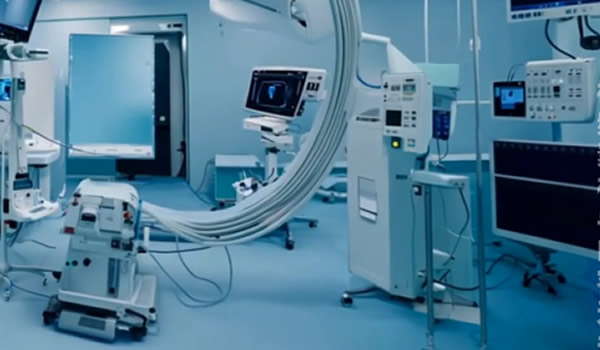Hypertension, or high blood pressure, is often called the “silent killer” because it progresses without symptoms but leads to serious complications such as stroke, heart attack, kidney disease, and premature death. In Asia, hypertension has become a public health crisis due to urbanization, aging populations, and unhealthy lifestyles. This article examines the epidemiology of hypertension in Asia, its causes and risk factors, health impacts, treatment options, and strategies to reduce its burden across the region.

Hypertension: A Growing Crisis in Asia
- Global prevalence: Nearly 1.3 billion people worldwide have hypertension.
- Asian burden: More than half of these cases are in Asia, particularly China and India.
- Awareness gap: Many individuals are undiagnosed; even among those diagnosed, control rates remain low.
- Mortality: Hypertension is the leading contributor to cardiovascular deaths in Asia.
Risk Factors for Hypertension in Asia
1. Genetic and Ethnic Factors
- Asians may develop hypertension at lower body mass indices (BMI).
- High salt sensitivity more prevalent in Asian populations.
2. Lifestyle-Related Factors
- Diet: Excessive salt and processed food consumption.
- Sedentary lifestyle: Reduced physical activity in urban centers.
- Obesity: Increasingly common in Asia due to westernized diets.
- Alcohol and smoking: Contribute significantly to high blood pressure.
3. Socioeconomic and Environmental Factors
- Limited healthcare access in rural Asia.
- High stress levels due to fast-paced urbanization.
- Air pollution may exacerbate cardiovascular risks.
Symptoms and Complications
Hypertension rarely causes noticeable symptoms until damage occurs. Potential complications include:
- Stroke and heart attack (major causes of death in Asia).
- Heart failure and arrhythmias.
- Chronic kidney disease and dialysis dependence.
- Aneurysms and vascular damage.
- Cognitive decline and dementia in elderly populations.
Diagnosis of Hypertension
- Blood pressure measurement: Systolic ≥140 mmHg and/or diastolic ≥90 mmHg on repeated tests.
- Ambulatory BP monitoring: Detects “white coat” or masked hypertension.
- Home monitoring: Encouraged for early detection and long-term tracking.

Treatment Approaches
1. Lifestyle Interventions
- Diet: Adopt DASH (Dietary Approaches to Stop Hypertension) with more fruits, vegetables, and low-fat dairy.
- Salt reduction: Aim for <5 grams per day.
- Physical activity: At least 30 minutes of moderate exercise daily.
- Weight control: Even modest weight loss reduces BP significantly.
- Stress management: Yoga, meditation, and mindfulness.
2. Medications
- Diuretics: Reduce salt and fluid retention.
- ACE inhibitors & ARBs: Improve blood vessel relaxation, protect kidneys.
- Calcium channel blockers (CCBs): Effective in Asian populations.
- Beta-blockers: For heart patients with hypertension.
- Combination therapy: Most patients require more than one medication.
3. Community and Public Health Approaches
- Hypertension screening in schools and workplaces.
- Government programs offering free or subsidized medications.
- Digital health apps for tracking and reminders.
Daily Care and Patient Management
- Self-monitoring: Home BP devices for daily tracking.
- Medication adherence: Critical to prevent complications.
- Regular check-ups: Blood sugar, kidney function, and cholesterol monitoring.
- Family involvement: Support improves long-term adherence.
Prevention Strategies in Asia
- National Salt Reduction Programs Public campaigns to reduce salt in cooking and processed foods.
- Urban Health Initiatives Parks, cycling lanes, and public fitness programs.
- School-Based Interventions Teaching children healthy eating and exercise habits.
- Policy and Regulation Taxation on sugary drinks and high-salt processed foods. Stronger tobacco and alcohol regulations.
Regional Insights
- China: Nearly 300 million hypertensive patients, many undiagnosed.
- India: Rapid rise in young adults, linked to urban stress and obesity.
- Japan: Historically high rates, but improved through national salt-reduction policies.
- Southeast Asia: Hypertension often undiagnosed until complications occur.

Future Directions
- Wearable devices: Smartwatches measuring BP in real-time.
- AI-driven prediction models: Identifying at-risk individuals.
- Telemedicine: Remote management of hypertension in rural areas.
- Precision medicine: Tailoring therapy based on genetics and lifestyle.
Conclusion
Hypertension is one of the greatest health challenges facing Asia, contributing to millions of deaths annually. Despite being a preventable and treatable condition, awareness and control remain alarmingly low.
The future of hypertension management in Asia requires multifaceted approaches—combining lifestyle changes, effective medications, public health campaigns, and digital innovations. With coordinated action, the tide of this silent killer can be turned.
hypertension Asia, high blood pressure treatment, hypertension prevention Asia, hypertension control strategies